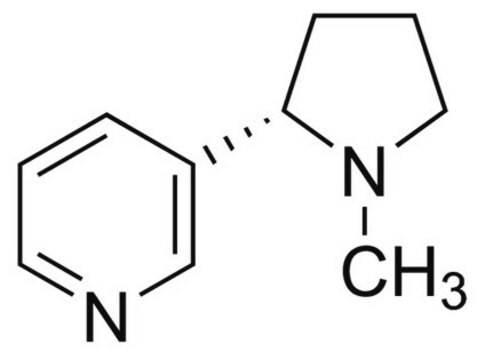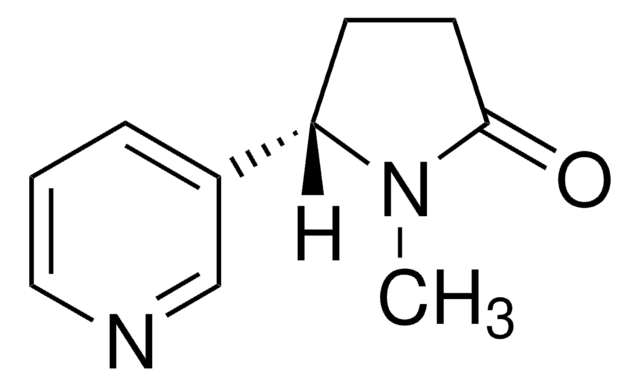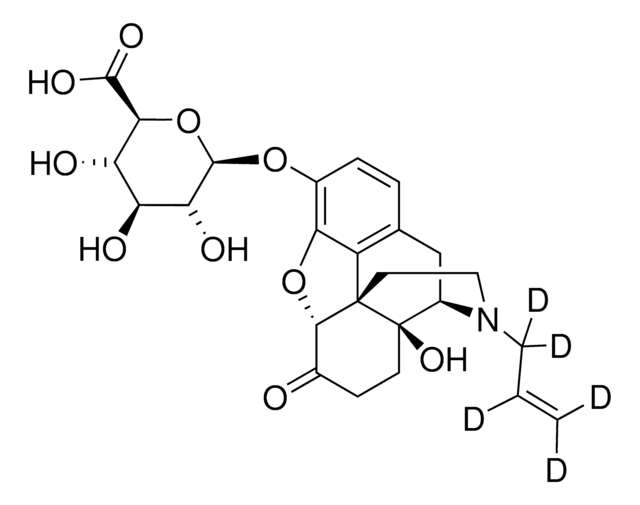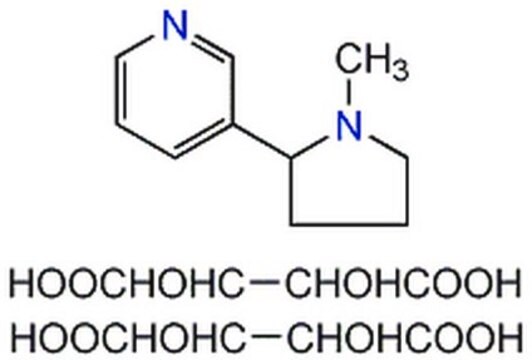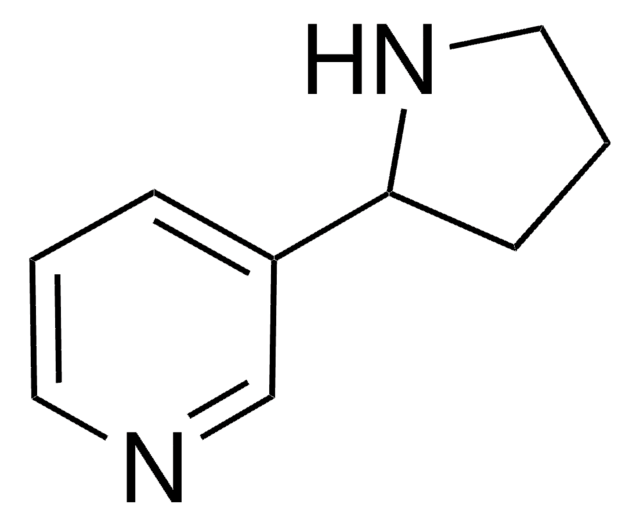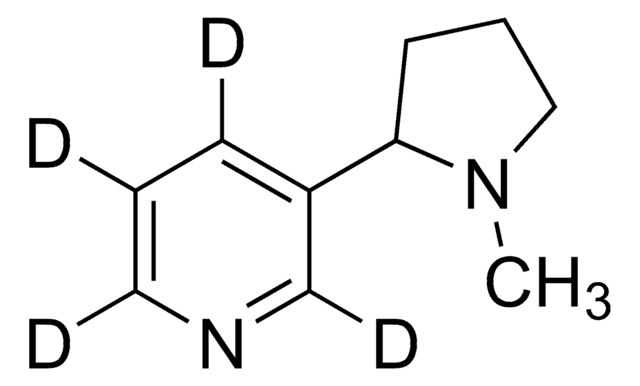N3876
(−)-Nicotine
≥99% (GC), liquid
Synonyme(s) :
(−)-1-Methyl-2-(3-pyridyl)pyrrolidine, (S)-3-(1-Methyl-2-pyrrolidinyl)pyridine
About This Item
Produits recommandés
Niveau de qualité
Pureté
≥99% (GC)
Forme
liquid
Activité optique
[α]20/D −169°(lit.)
Couleur
yellow
Indice de réfraction
n20/D 1.5265 (lit.)
Solubilité
ethanol: 50 mg/mL
Densité
1.010 g/mL at 20 °C (lit.)
Chaîne SMILES
CN1CCC[C@H]1c2cccnc2
InChI
1S/C10H14N2/c1-12-7-3-5-10(12)9-4-2-6-11-8-9/h2,4,6,8,10H,3,5,7H2,1H3/t10-/m0/s1
Clé InChI
SNICXCGAKADSCV-JTQLQIEISA-N
Informations sur le gène
human ... CHRNA2(1135) , CHRNA3(1136) , CHRNA4(1137) , CHRNB2(1141) , CHRNB4(1143) , CYP2A6(1548) , KCNH1(3756)
mouse ... Chrna7(11441) , Chrnb1(11443)
rat ... Chrna1(79557) , Chrna2(170945) , Chrna4(25590) , Chrna7(25302) , Chrnb2(54239) , Chrnb4(25103)
Vous recherchez des produits similaires ? Visite Guide de comparaison des produits
Description générale
Application
- to stimulate neutrophils in extracellular DNA fluorescence assay and in immunostaining of neutrophils
- to study the effects of chronic neonatal nicotine exposure on nicotinic acetylcholine receptor (nAChR) binding, cell death and morphology in hippocampus and cerebellum
- in an in vitro study to evaluate the effect of root exposure to nicotine or cotinine on the morphology and density of fibroblasts
Actions biochimiques/physiologiques
Notes préparatoires
Mention d'avertissement
Danger
Mentions de danger
Classification des risques
Acute Tox. 1 Oral - Acute Tox. 2 Dermal - Acute Tox. 2 Inhalation - Aquatic Chronic 2 - Eye Dam. 1 - Skin Irrit. 2
Code de la classe de stockage
6.1A - Combustible acute toxic Cat. 1 and 2 / very toxic hazardous materials
Classe de danger pour l'eau (WGK)
WGK 3
Point d'éclair (°F)
213.8 °F - closed cup
Point d'éclair (°C)
101 °C - closed cup
Équipement de protection individuelle
Eyeshields, Faceshields, Gloves, type ABEK (EN14387) respirator filter
Certificats d'analyse (COA)
Recherchez un Certificats d'analyse (COA) en saisissant le numéro de lot du produit. Les numéros de lot figurent sur l'étiquette du produit après les mots "Lot" ou "Batch".
Déjà en possession de ce produit ?
Retrouvez la documentation relative aux produits que vous avez récemment achetés dans la Bibliothèque de documents.
Les clients ont également consulté
Notre équipe de scientifiques dispose d'une expérience dans tous les secteurs de la recherche, notamment en sciences de la vie, science des matériaux, synthèse chimique, chromatographie, analyse et dans de nombreux autres domaines..
Contacter notre Service technique
